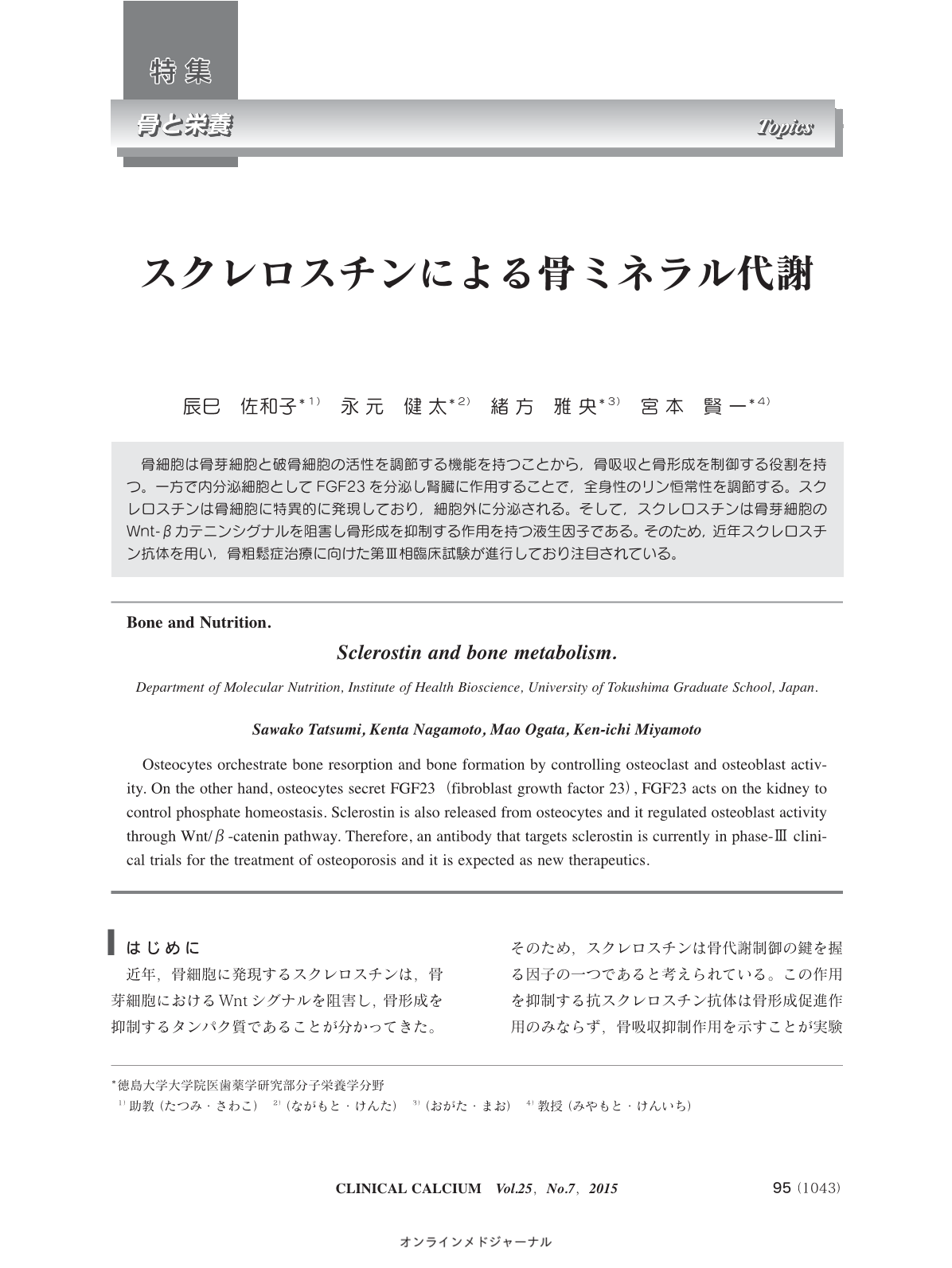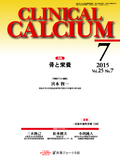Japanese
English
- 有料閲覧
- Abstract 文献概要
- 1ページ目 Look Inside
- 参考文献 Reference
骨細胞は骨芽細胞と破骨細胞の活性を調節する機能を持つことから,骨吸収と骨形成を制御する役割を持つ。一方で内分泌細胞としてFGF23を分泌し腎臓に作用することで,全身性のリン恒常性を調節する。スクレロスチンは骨細胞に特異的に発現しており,細胞外に分泌される。そして,スクレロスチンは骨芽細胞のWnt-βカテニンシグナルを阻害し骨形成を抑制する作用を持つ液生因子である。そのため,近年スクレロスチン抗体を用い,骨粗鬆症治療に向けた第 III 相臨床試験が進行しており注目されている。
Osteocytes orchestrate bone resorption and bone formation by controlling osteoclast and osteoblast activity. On the other hand, osteocytes secret FGF23(fibroblast growth factor 23), FGF23 acts on the kidney to control phosphate homeostasis. Sclerostin is also released from osteocytes and it regulated osteoblast activity through Wnt/β-catenin pathway. Therefore, an antibody that targets sclerostin is currently in phase- III clinical trials for the treatment of osteoporosis and it is expected as new therapeutics.



